Creative work involves working with different kind materials. When sculpting figures, for example, in addition to clay, you can use cold porcelain, which is much easier to deal with. This plastic composition is more delicate, which ensures that the feeling of weightlessness is preserved in finished crafts. Flowers are often made from cold porcelain and small parts requiring careful study.
What is cold porcelain
The main ingredients, without which it is difficult to imagine the preparation of this type of porcelain, for a long time glycerin, corn starch, PVA glue and oil were considered. Modern recipes undergo changes in composition. A homogeneous composition for modeling was invented at the beginning of the last century in distant Argentina. Initially, it was created for the manufacture of small figurines with many details. Art molding from cold porcelain is popular among adults and children because of the extreme ease of working with it.
How to make cold porcelain with your own hands
The convenience of soft pliable mixtures for creativity lies in the possibility of preparing them at home. You can make cold porcelain with your own hands without special costs strength and Money. Step by step instructions differ, but basically contain the same steps and ingredients. The recipe for cold porcelain at home may contain such a step as cooking, or it may do without it. There are ways to cook even in the microwave, but they are more time-consuming.
Training master class for beginners
It will take time to learn how to sculpt beautiful figures, but even beginners who have never sculpted handicrafts can easily prepare cold porcelain. The mass is prepared from the following components:
- corn starch;
- baking soda;
- water;
- vegetable oil.
A more common cooking method looks like this:
- Take the same number soda and starch, move between them in a saucepan.
- Gradually add water to the dry ingredients. The proportions should be 2:1.
- Pour in some oil.
- Put the composition on a gentle fire and, constantly kneading, bring to a thickening. Porcelain should be of a dense consistency.
- After turning off the stove, cover the saucepan with porcelain, pre-moistened with a towel.
- Having achieved suitable temperature, wash the material with your hands to ensure uniformity.
Recipe for cold porcelain without cooking
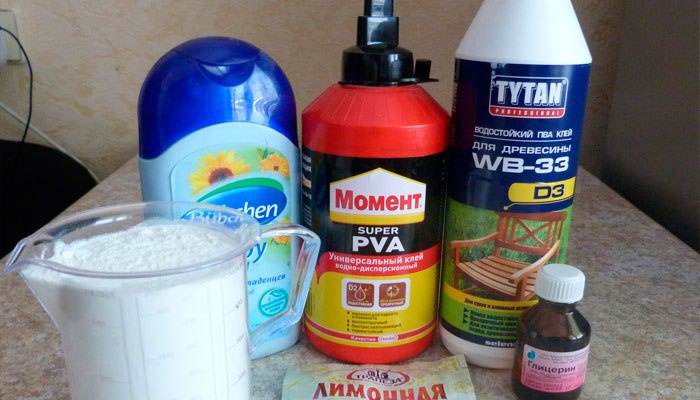
To cook or not to cook? That is the question! Craftswomen who prepare cold porcelain with their own hands are divided into two categories: the first for cooking, and the second against it. There are practically no differences in consistency and properties. Cold porcelain without cooking is just as plastic and easy to make. The required ingredients include:
- starch - 2 tbsp. l.;
- vaseline - 1 tbsp. l.;
- baking soda;
- PVA glue.
The algorithm is:
- Take a dry dish and pour starch into it. You can take corn or potatoes.
- After slightly melting the vaseline in a water bath, add it to the dry ingredient.
- Sprinkle some soda. Thoroughly mix the future porcelain to avoid the formation of lumps.
- Next, add glue by a teaspoon to achieve softness of the composition.
- Before work, lubricate the material washed to homogeneity with petroleum jelly.
How to cook from potato starch on the stove
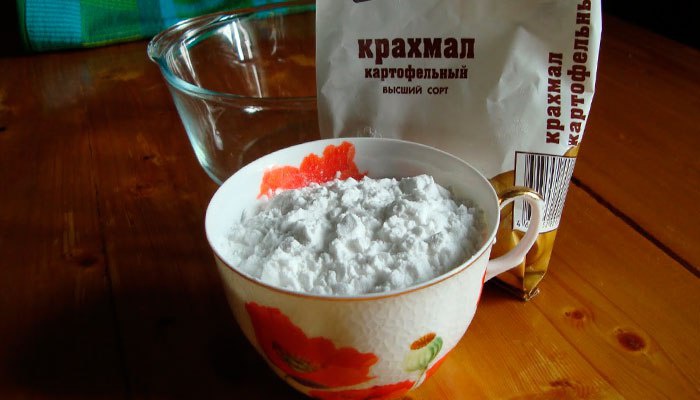
Potato starch is a more familiar ingredient for culinary experts than its corn counterpart. It can be found in almost every home, so cooking porcelain from it may be easier in terms of availability. If you plan to create light elements, such as rose petals, it is better to forego potato starch, since the characteristic of the product is a grayish color. A simple classic way involves cooking on the stove. List of components:
- potato starch - 180 g;
- glue - 180 ml;
- lemon juice- 1 tbsp. l.;
- glycerin - 1 tbsp. l.;
- vaseline - 1 tbsp. l.
Actions are as follows:
- Sequentially combine all the ingredients in a small saucepan. The mass will turn out to be liquid, it must be mixed to a uniform consistency before being cooked through heat treatment.
- The dishes with the solution are placed on the weakest fire and the composition is stirred. Readiness is determined by the mass adhering to the spoon.
- The cooled material is kneaded with hands smeared with cream for at least 5 minutes.
How to color the resulting mass
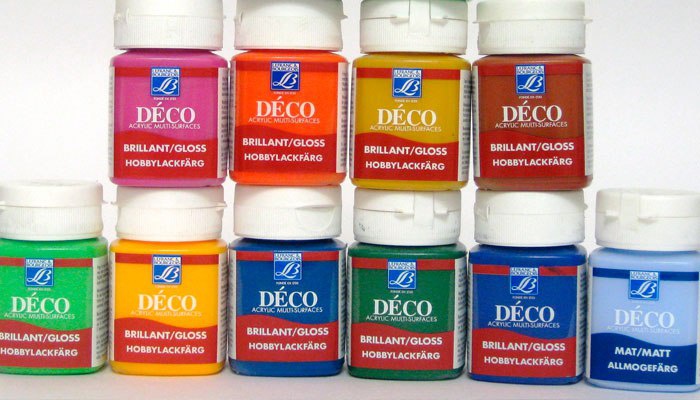
Cold porcelain made at home requires staining. Food colorings, pigments and acrylic paints are used to impart color to the mass. The first two dyes are used when cooking porcelain, adding to the composition along with the main components. In this case, you will need to prepare several balls of porcelain mass in order to endow each different color. Acrylic paints are used when the product is dry and just needs to be painted. This option is a little more convenient, more practical and takes less time.
How to do crafts
Cold porcelain is a material that is often mentioned in master classes for making flowers. You can blind them without using special tools, with one hand, but best result it turns out to achieve with the help of mold. In addition to them, delicate flowers are made using plastic spoons. The plastic mass is laid and rolled along the deepening of the spoon, and then several of these elements are assembled into a flower, for example, a tulip. You can use different tools, this creative process is limited only by imagination.
How to dry the finished product
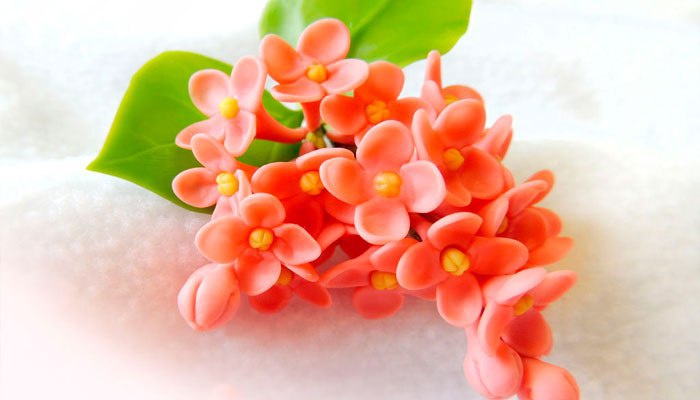
Drying the finished craft - milestone all work with cold porcelain. There are cases when, when drying finished product the material cracks, leaving ugly grooves. How to properly dry the craft? This is done at room temperature at least during the day. It is very important to turn the product over if it is lying on one of the sides, and not in an upright position. To speed up the process, some needlewomen slightly heat the oven, and then, turning it off, briefly place the craft there.
Video: how to make liquid porcelain with your own hands
The network is literally teeming with video-recorded master classes of craftswomen, where they share their secrets for sculpting from cold porcelain. Such lessons are very visual, they contain step by step recipe preparation of the material and several options for handling it. It is often easier to visually understand how to work with a plastic mass than when the phased creation of crafts is described verbally. Check out some detailed video tutorials below.
Photo of handmade cold porcelain products

Today there are many areas of needlework. Someone likes to embroider, someone to do appliqué. There are many materials in needlework stores that allow you to make anything you want, you just have to dream a little. Cold porcelain products are very popular today, which can be made at home. There are several ways to make cold porcelain with your own hands. You can cook, or you can do without cooking.
Cold Porcelain Ingredients
To make cold porcelain at home, we need:
- Glue;
- Lemon acid;
- Starch;
- Baking soda;
- Petrolatum;
- Glycerol.
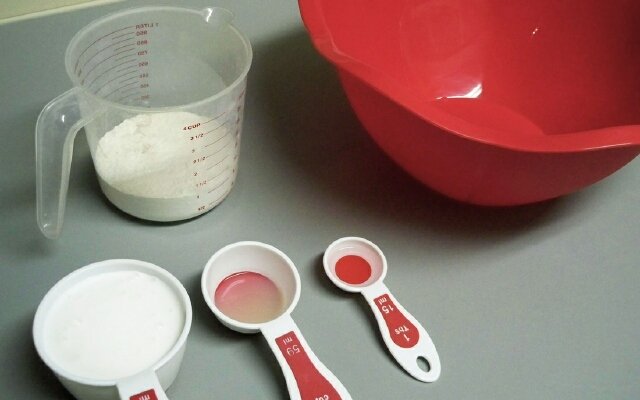
The quality of porcelain largely depends on what kind of glue will be used in its preparation. Ordinary building PVA, which can be purchased at any hardware store, is best suited.
Starch should also be chosen with great care, it is best to use corn starch for cold porcelain, as products are obtained from it. white color. As for potato starch, it gives the material a grayish tint.
Instead of Vaseline, a regular cream is quite suitable, citric acid can be completely replaced with vinegar. True, you should be extremely careful with it, you only need a few drops, because if you overdo it, the cold porcelain will turn out sour, and the crafts will crumble.
Cooking cold porcelain without boiling
To prepare such wonderful cold porcelain, as in the photo

it is necessary to prepare a container, it must be deep.


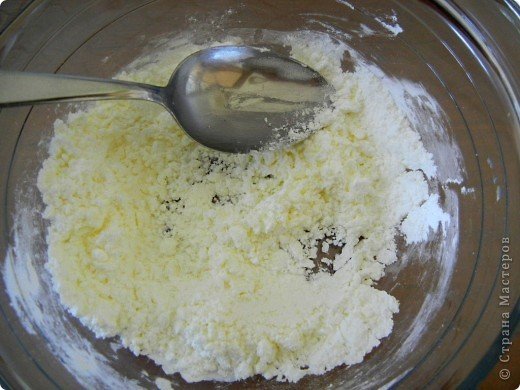
After the mixture is thoroughly mixed, you need to add a little baking soda, about a quarter of a teaspoon, and a few drops of glycerin, after which everything should be mixed.

The next step is to start adding glue.
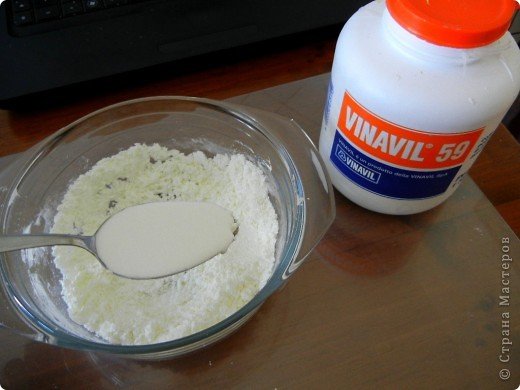
This must be done gradually. Glue should be poured in as much as needed to make the mixture elastic and durable.
Before you start working with glue, you should lubricate your hands with cream, this will protect your skin from allergic reactions, and also prevent the porcelain mixture from sticking. Glue is added until the porcelain is ready.
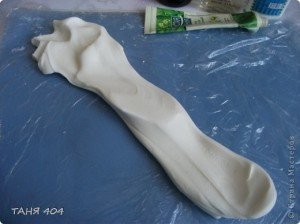
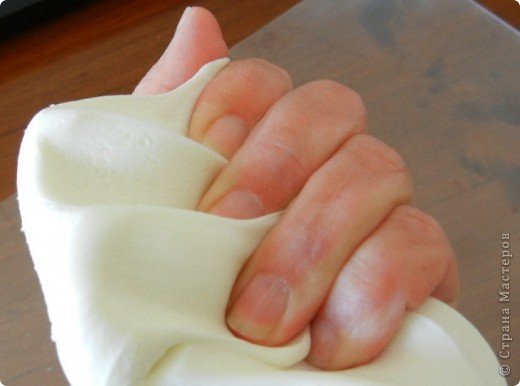
This do-it-yourself cold porcelain recipe is quite simple and, as the name implies, does not involve cooking. If desired, it can be tinted with various dyes. In order for the color to turn out uniform, it is worth mixing the mixture thoroughly. True, it is worth saying that the recipe for cold porcelain without cooking has a big minus, it is stored for a very short time. Of course, you can wrap it in cellophane and put it in the refrigerator, but this will not extend its life for a long time.

Cooking porcelain by boiling
At home, you can also cook cold porcelain by boiling. Glue is also used for this, it must be mixed in equal proportions with starch, then add glycerin and a little citric acid. After the mass is mixed, add 1 tbsp. cream and bring the mixture to a creamy state.
Next, place the blank mass in a cooking container and cook over low heat for 3 minutes. During the cooking process, porcelain can form lumps, so you should constantly stir the mass until it begins to move away from the walls. Some people simply put the mass in the microwave, but it is safer to use the old and proven method of cooking over a fire.
After the cold porcelain is ready, it is worth kneading it on the table, after smearing it with cream. Next, place the porcelain in cellophane and place in the refrigerator. Boiled cold porcelain can be stored this way for about 2 weeks. From it you can make any crafts from flowers to toys.
In order to study the cooking process in detail, I recommend watching the video tutorials below.
A selection of videos on working with cold porcelain
Porcelain ceramic flowers website: http://www.anriirene.com
Recipe from 04/02/15. As promised in the article "Composition of industrial self-hardening polymer clay", at the end of which there is a composition of Japanese cold porcelain Vitrium, or synthetic resin emulsion clay Vitrium(from which you can make flowers, jewelry, and miniatures), give your home recipe polymer clay, in which I relied on the composition (MSDS) declared by the manufacturer. I hope that many will like it =). This recipe is given here for the first time, so please indicate the author and link when using the materials of this article.
I suggest you read the information in the article."
Ceramic floristry", it can be useful, especially for beginners.
You can see my works from cold porcelain in the "ceramic floristry" technique or on instagram @anri.irene_porcelain.art
Subscribe to my video channel Youtube Anri Irene to watch my video tutorials. My master class on sculpting roses from cold porcelain is there. I invite you!
You can see All my flowers made of polymer clay (cold porcelain) molded in style "botanical sculpture" "floristic sculpture"
Japanese Vitrium clay itself in modeling is quite dense, hard and resilient, but obedient (for example, fleur clay is much softer). After drying it is waterproof and very flexible. There are two types - transparent and opaque (like cold porcelain). We will make the recipe opaque, which after drying looks like classic cold porcelain.
Unfortunately, I didn’t have photos of my products from it (I bought it back in 2011), but, to present a picture from the Internet, how Vitrium looks in a dry form:
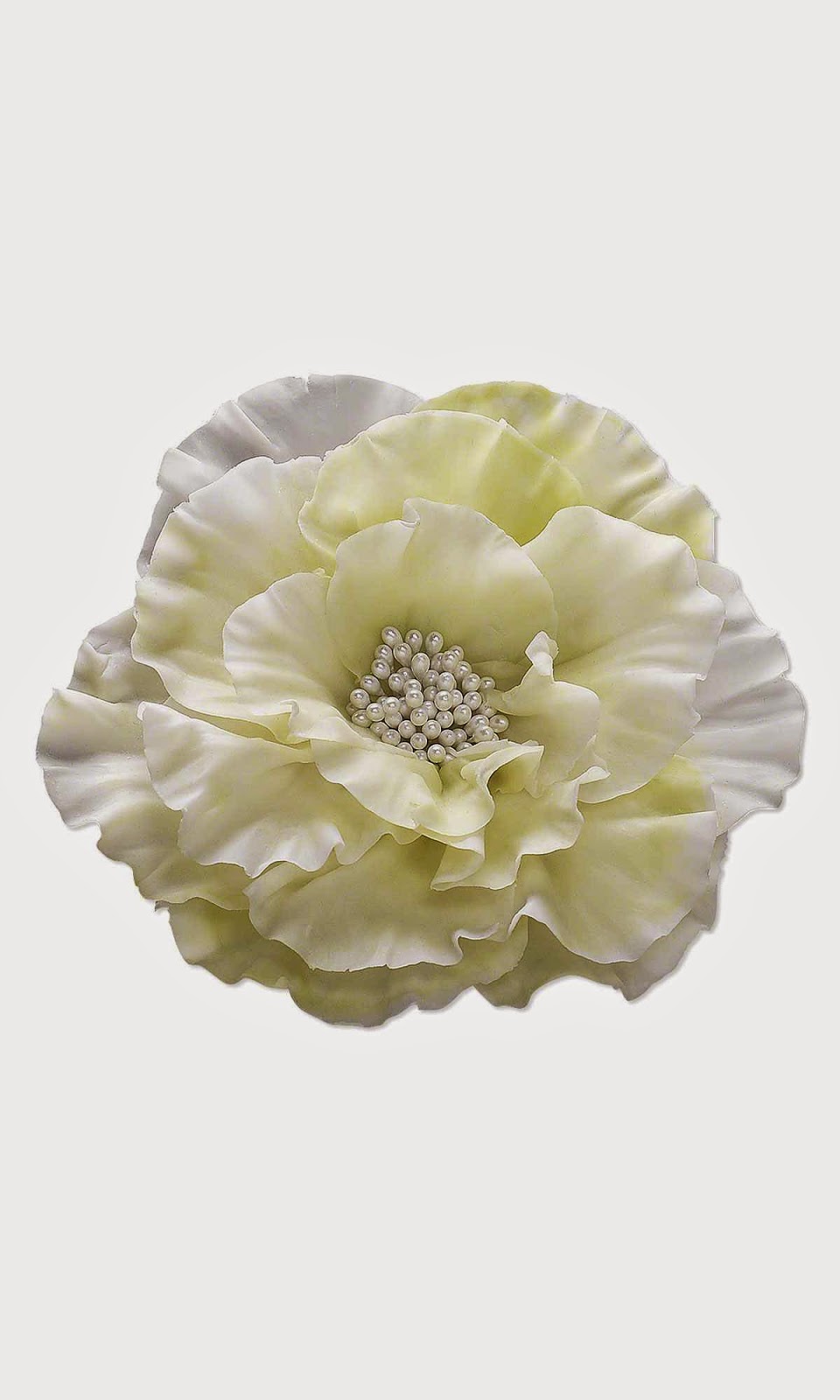 |
| Vitrium polymer clay |
Although I myself have not yet used Modena clay, but judging by the descriptions and feelings of modena master users, they are very similar in properties to Vitrium.
P/S. A little later after writing the article, I received a package with Modena polymer clay. My assumptions were correct - it is very similar to Vitrium, only a little softer and less durable.
In my recipe, I made it a little softer. This is, of course, an amateur. You can make it stiffer and denser. I named my recipe "Inspired by Vitrium". =))
This is how it (already according to my recipe) looks raw:
This is what it looks like when dried:
In the finished flower:
There are more flowers from it at the very end of the article.
It is painted in the same way as homemade cold porcelain, and as purchased polymer clays self-hardening in air. Water resistance and flexibility after drying depend on the PVA glue used to prepare cold porcelain. After drying, the petals are flexible. Dries faster than boiled HF.
I saved the MATERIAL SAFETY DATA SHEET document on Vitrium, in which the manufacturer gives the composition. Of course, there is no technology, recipe and quantity, but I decided to try my recipe, especially since the composition is very simple and affordable.
Vitrium polymer clay composition:
- Ethylene-vinyl acetate (EVA, EVA)- I I used improvised white PVA glue, because. Unfortunately, I don't have EVA glue yet.
- Fatty acid- take stearin (you can grated stearin candle). There are many types of fatty acids. Perhaps you can try other options.
- Cellulose - I have cotton fine powder (like flour)
- Pregelatinized starch -I used Bison starch wallpaper paste, which simply dilutes with water and swells into a paste. As part of the glue, only starch was written (without details), which I do not know for sure, but modified. It is snow-white in color, not very large flakes. Additionally, to make it smaller and more evenly dissolved, I ground it into powder in a coffee grinder. It’s a pity that I don’t have pregelatinized, swollen starch yet, so I used what was at hand. Perhaps pregelatinized starch would have been even better.
- Water and others- so it was written "and others." I think it means humectants or wetting agents, like glycerin, propylene glycol, etc.
More likely (these are my guesses), the manufacturer, preparing this mass for modeling, does not "cook" it, i.e. does not expose to temperature, tk. It already contains pregelatinized starch. So ordinary starch and cellulose will just be fillers.
I once tried to make cold porcelain from wallpaper glue (there are recipes on the Internet, reprinted and copied many times), but I didn’t like it at all. At least, it is not suitable for sculpting realistic flowers.But the recipe "based on Vitrium" differs in composition.
Recipe for polymer clay without cooking "based on Vitrium":
PVA glue Bison wood D2 - 110 gr (not milliliters)
Glycerin - 1 tsp
Propylene glycol - 0.5 tsp (can be replaced with glycerin)
Wallpaper glue Bison universal - 4 gr. (1 tsp) ground to a fine powder.
Mix PVA glue, glycerin, propylene glycol, pour wallpaper paste into it and leave to swell for a couple of hours. After mixing the wallpaper paste, the mass in terms of density looks something like in the first picture:
While the wallpaper paste swells, I melt the stearin (a finely grated candle) in equal proportions mixed with petroleum jelly and baby oil (one teaspoon each), mix everything well and cool. We do not boil this cold porcelain, therefore, so that there are no lumps of grated stearin, we melt it first.
Mix everything well with a spatula until smooth. The photo above shows how the process looks like and the mass itself in the process =)). Then 1/4 teaspoon of starch and 1/4 tsp were poured onto the table. tylose (SMS, CMC) and finally thoroughly kneaded. I left it for a day (like the usual classic HF). The next day, the mass became much denser.
If you do without tylose, then you need to add a little more starch. You can also adjust the density and density yourself, according to your preferences, by adding more starch or tylose. Just do not rush to add a lot of tylose at once (no more than 1/4 tsp additionally, i.e. no more than 1/2 tsp in total), because. it can swell within 18-20 hours and as a result the mass can become too rigid and, subsequently, more brittle. The picture above shows that the dried mass with tylose looks more matte and dense.
A small afterword. I also wanted to write why I decided to try to make several different working recipes for cold porcelain without heat treatment (without boiling), although I personally prefer boiled mass. It's just a habit, some kind of warm affection for him. Even the process of preparation and transformation is very pleasant. Unboiled cold porcelain undoubtedly also has its own, and quite big advantages.
Well, glue is the culprit.I noticed that some types of glue, even very good, very elastic after drying in its pure form, when preparing CF in the classical way (treatment with temperature), become either brittle after drying, or rigid, not flexible, or both.Yes, and the mass itself with them is heterogeneous, "curdled", although it is possible to mold something. It is also not always possible to buy glue that meets all our requirements. And in recipes without cooking, glue behaves differently. Petals after drying remain flexible and durable. Of course, the strength also largely depends on the glue, and in this case - if it is "weak", then it is not able to firmly bind-glue the dry components. But, for example, high-quality glue for furniture or laminate should cope with this. Wood flour is added to them to make a thick putty, for restoration, for example, chips.
My samples are still several months old - they have not lost flexibility and strength. Strength, of course, is also not an unambiguous concept, but I deliberately dropped ready-made roses upside down on the tiled floor - they remain intact, nothing breaks off or breaks. For me, that's enough strength. If the petals are very thin and narrow, sharp, then the tip may break off (honestly, I haven’t tried it, this is my guess). But even with purchased famous brands HF can happen.
Overall, I am very pleased with my new recipes. Of course, the structure of the mass itself is slightly different from the classic HF, but you get used to it very quickly, literally on 3-4 petals. You may need to tweak my recipes a little for yourself, because. the density of the glue is different, the degree of swelling of pregelatinized starch, wallpaper glue, tylose, alginate, tragacanth, cellulose, etc. is different. But as a basic guideline, or starting point, they can be used.
With new recipes, there is now more choice to make the mass according to your needs and requirements: matte-glossy, transparent-opaque, dense-soft, hard or elastic, etc. And one more of important factors- we can even use the glue that was not suitable for the classic "boiled" recipe for some reason. I have a lot of these bottles, which are now well used =)).
P/S: Maybe someone will come in handy. Links to powdered cellulose (natural) that might be suitable for cold porcelain:Cellulose powder PCS. CJSC Policell, Vladimir
Cellulose powder LLC "Sadko", Kiev
Cellulose powder Arbocel - description in Russian
Cellulose powder ARBOCEL in Germany, the company J. RETTENMAIER & SÖHNE.
My other recipes
Cold porcelain is a combination of glycerin, oil, glue and starch. A beginner can find some porcelain recipes for himself. At the beginning of work, you need to know that the shade of the resulting material depends on the selected recipe, as well as on the selected products. Products from potato starch are gray and dense, and from corn starch they are airy, transparent and have a slightly yellowish tint. Today we will tell you another secret to making easy-to-work, cheap and air-drying material. Even a child can use it. And for adults it is very important that the creativity of children remains for a long time! We will give the recipe for cold porcelain in our article.
Basics and secrets for masters
When hit on Fresh air a product made of such a plastic mass hardens quite quickly, hardens and becomes very durable, like porcelain. This mass is very plastic, it is easy to sculpt various products from it.
Buy finished materials available at stationery stores. They are quite expensive. Yes, there are colors, not always what we would like. Therefore, by trial and error, people have learned to prepare a similar plastic mass at home from ingredients that are not difficult to buy.
Probably, before moving on to an improved recipe for making cold porcelain with your own hands, it is necessary to recall that when cooking it at home, it is imperative to use tools: rubber gloves, a respirator (not a gauze bandage, but a respirator with gas mask functions). The room must be equipped with a system forced ventilation. And, of course, in no case should there be children, pets, or open food nearby. The material itself obtained in the process of heating in the microwave is absolutely harmless.
Therefore, there were recipes for preparing such a plastic mass at home from ingredients that are quite simple to buy. It is recommended to strictly observe the proportions indicated in the recipe and take those components that are listed.
Recipe
A simple recipe for making cold porcelain with little tricks without cooking:
- part of wallpaper glue (the composition must necessarily contain modified starch, you can use "Moment Classic")
- part of soda
- Vaseline oil
- part of the water
- dishwashing liquid
Dishes:
- Mixing bowl - glass refractory,
- plastic spatula,
- Stand for rolling mass,
- Mixing spoon,
- Polyethylene
Stages of work:
In a bowl, mix glue and soda, add cold water, mix quickly and form a lump.
If necessary, add more soda (if the liquid mass).
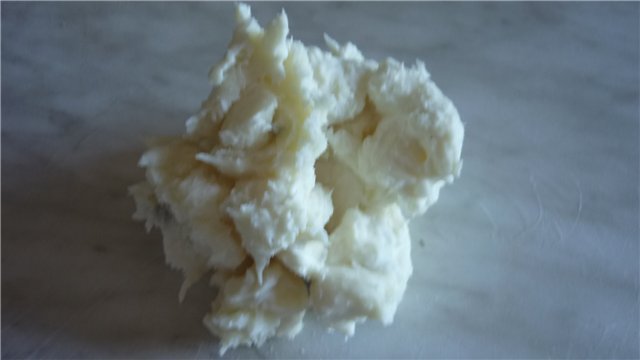
Mix in a small amount of dishwashing detergent.

The result is an elastic material, perfectly white, absolutely non-sticky and pleasantly smelling!
You can not change anything in this recipe, because it is a long-term experiment. If you change something in it, the result will be different (especially for glue).
We paint the prepared mass first with the addition of paint to obtain the main color, and then add accents as needed.
Mainly used oil paints and finish painting either also with oil, or acrylic paints(depending on what we expect to receive).

If potato starch was used, you can first add white acrylic paint or whitewash to improve the color, and then paint in desired colors.
When your close friends or relatives celebrate a celebration, you want to give something that will leave a pleasant memory for many years. Of course, this is a gift made with my own hands! It can be a decorative cup decorated with cold porcelain flowers. If you can’t make a cup, then instead of it you can make any figure that your friend will definitely like!
Working with cold porcelain is a great pleasure and delight and does not present any difficulties. You can use molds for petals that are used in cooking.
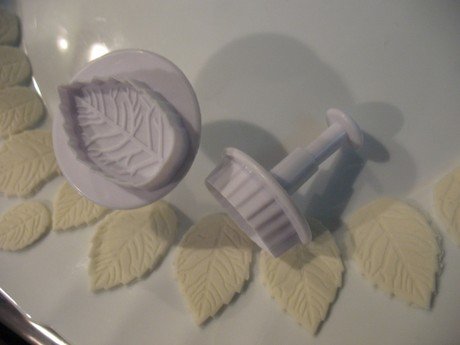
Even when a thick layer dries, the porcelain will be crack-free. Products do not lose their shape or integrity.
Products from "cold porcelain" dry out for about a day, while they do not break when they fall, they remain quite strong.
Flower arrangements are especially beautiful from porcelain.

Get creative - make your life even more diverse, add brightness and colors. Every person has a talent, you just need to notice it in time.
Related videos
Figurines, decorations, bouquets of artificial flowers made of cold porcelain (plastic) look beautiful and realistic. Looking at them, it seems that only a very skilled and talented craftsman can make such a product. In fact, the technology for working with this material is quite simple, and anyone can master it.
How to start a beginner master? First of all, you need to stock up on stucco material. You can buy it at a craft store, or you can make your own. About how to make cold porcelain at home, how to decorate it in different colors, as well as the basics of manufacturing simple flower readers can learn from the information provided in the article. And viewing photos of beautiful products from this stucco material will certainly give a charge of positive emotions and inspiration for creativity.
Modeling plastic products is considered a new type of needlework. In fact, it appeared in the middle of the last century in Argentina. Why given material is called "cold porcelain", because it does not contain components that are part of the natural ceramic mass? The fact is that plastic products, when dried, become outwardly very similar to porcelain. And "cold" - because the compositions made from it do not require heat treatment. They dry very quickly naturally.
How to make cold porcelain at home: method number 1 (hot)
In order to make stucco material with our own hands, we prepare the following set of components:
- corn starch - 1 large (200 grams) glass;
- pharmacy glycerin - 2 small spoons;
- PVA glue - 3.5 large glasses;
- water - 100 grams.
How to do it yourself, learn from next instruction. Pour clean cold water, glue and glycerin into a saucepan with a thick bottom. We mix the components. We put the vessel on a low fire to warm up. The solution is constantly stirred. Next, pour starch into the pan in small portions. At this stage of work, it is necessary to increase the intensity of mixing of the hot mass, otherwise the starch will clump. The consistency of the workpiece will become thick.
Cook the plastic until it looks like dough. As soon as the mass gathers in a lump, spread it on a wet towel and wrap it. Next, knead the plastic directly in it for about 10 minutes. When the cold porcelain has cooled down to the point that it can be picked up, knead it well again and divide it into pieces. At this stage, the plastic is painted in the desired colors. We will talk about how to make cold porcelain colored a little later.

We do plastic surgery ourselves: method number 2 (cold)
This stucco material can be made without heat treatment of its components. Let's get acquainted with the recipe for making plastics in a cold way. The following components are required for operation:
- corn or - 200 grams;
- vaseline or baby - 1 large spoon;
- PVA glue - 200 grams;
- perfume or toilet water - 1 small spoon;
- vaseline - 2 large spoons.
How to make cold porcelain at home, read in the description of the process. Mix glue, oil and Vaseline in a bowl. Add starch to them in small portions. Knead the mass of a homogeneous consistency. Sprinkle starch until the workpiece looks like a lump of dough. Next, we wrap the resulting material in plastic bag or cling film and leave in a cold place for 12 hours, and even better for a day. After this time, plastic products can be molded. 
How to make cold porcelain colored?
Paint plastic home cooking Can different materials: acrylic paints, oils, food coloring. To do this, they are added to the finished mass at the stage of its kneading.
If you need to paint an already finished frozen product or individual parts, you will need brushes, cotton swabs and dry food paint. Paint is applied to plastic elements. Then the part is picked up with tweezers and held for a minute or two over steam from boiling water. Thus, cold porcelain absorbs the dye.
Storing homemade plastic
How to make the coldest porcelain, you already know. And how to save it for some time? Wrap tightly a lump of plastic in cling film and place on the shelf of the refrigerator (not freezer). Storage in this way allows the material to retain its properties for about 2 weeks. 
Sculpting Lesson: Rose Flower
The following is a master class that describes how to make a rose from cold porcelain. From a small lump of plastic we make a blank in the form of a droplet. Lubricate the tip of the toothpick and put this part on it. Next, we sculpt a few more blanks of this type, only a little larger in size. We flatten them, giving the shape of petals. Lubricate their bases with glue and wrap around the "droplet core". The edges of the petals are slightly bent down.
Each such detail is slightly superimposed on one another. Thus, we carry out the desired number of petals. We insert a toothpick into a household sponge and leave the product to dry. Such a flower can be used to make jewelry, key chains, bouquets. 
How to make cold porcelain at home? We hope that in this article you have received a complete answer to this question. Happy creativity!

